By Matthew Podosky
Birding on the Appalachian Trail
February 22, 2024
I’ve been obsessed with birds for almost as long as I’ve been obsessed with the Appalachian Trail. When I began my thru-hike in 2022, I immediately fell into the routine of early morning birding on trail. Those first few hours of hiking in the morning, when the birds were all singing, was my favorite part of each day. As I walked, I would focus on the birds, imagining each species in my mind as I heard their distinctive songs.
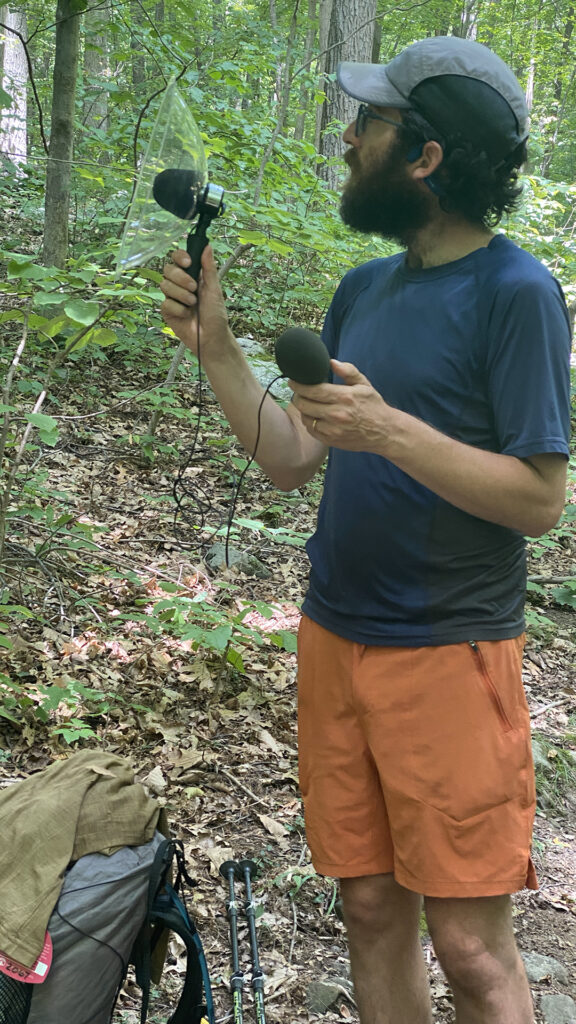
Matthew recording birdsong during 2022 thru-hike
I’m a casual birder. I don’t keep lists of the birds that I see, but there’s nothing I love more than being immersed in bird song. This began about 20 years ago when I was studying environmental science in college. I was hired by one of my professors to work on a songbird monitoring project, and I immediately became fascinated by this group of animals. Learning to identify each bird based on their song forever changed my perception of the forest.
It’s been many years since I worked as a bird biologist, but my love of birds has never diminished. After working as a biologist for several years, I began to teach myself how to make documentary films, and those first few films that I produced revolved around bird conservation issues (one about the California condor, Scavenger Hunt, and the other, Bluebird Man, about bluebirds). So when I started to think about attempting to thru-hike the Appalachian Trail, birds were still at the forefront of my mind.
My 2022 thru-hike of the A.T. was about more than just enjoying the company of birds, however. I’d been thinking about developing a documentary about the Trail, but this idea was hindered by the need to carry heavy professional film equipment. Capturing audio only would be significantly easier, and the idea for a documentary-style podcast and radio series began to emerge in my mind. Part of the appeal of creating an audio series was the potential to create soundscapes of the Trail. I wanted to help others experience the complex and varied sonic landscape of the trail, which places birdsong at the forefront.
To achieve this, I needed a highly specialized microphone. Recordings of birdsong are typically captured using what’s called a parabolic microphone, which is essentially a large plastic dish with a microphone at the center (also used at sporting events to capture the dialogue of players from a distance). This parabolic microphone setup was too large to fit inside my pack, so it remained strapped to the outside of my backpack for the duration of my hike. Fellow thru-hikers had lots of interesting guesses as to the nature of this device, including a popcorn popper and a meat smoker! After explaining its true purpose repeatedly, the trail name “Birdman” was bestowed upon me.

Blue-headed Vireo perched above its nest. Photo by Matthew Podolsky
It’s been almost 2 years since I began my thru-hike, and in the intervening time, I’ve been listening back to all the audio that I recorded on trail and using it to craft my upcoming podcast series called Common Land. I’m happy to say that listeners of the show will get to hear lots of birdsong recorded from the A.T.! There will be a few bird-related stories featured in the series, but additionally, the birdsong that I recorded on trail will serve as the backdrop for my entire journey. Songbirds are an ever-present fixture of the Appalachian Trail, and I hope that by sharing my love of birdsong I can introduce at least a few hikers to the amazing world of birding.
This podcast series, a collaboration between The Wild Lens Collective and New Hampshire Public Radio, will premiere late summer or early fall 2024. In the meantime, you can check out some of my birdsong recordings from the A.T. by listening to one of the mini-episodes that I produced while I was on trail back in 2022. Additionally, check out a few of my favorite birds that I saw on my Appalachian Trail thru-hike.

Dark-eyed Junco
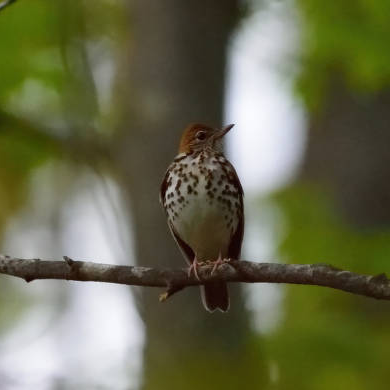
Wood Thrush
The Wood Thrush has a musical, flute-like song. The Appalachian Trail corridor makes up the bulk of the Wood Thrush’s breeding territory. A healthy A.T. landscape is critical for the Wood Thrush as its numbers have declined seriously in recent decades. Photo courtesy of U.S. Fish & Wildlife.

Veery
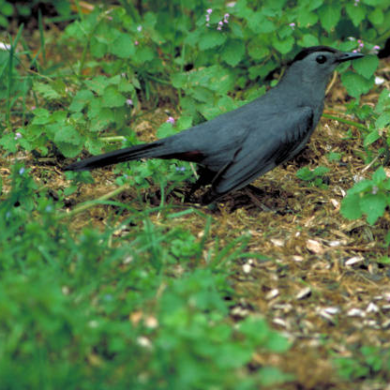
Gray Catbird
The Gray Catbird gets its name from the cat-like mewing sound it makes. Most catbirds winter in the southern United States or the tropics, but a few linger far to the north if they have access to a reliable source of berries or a well-stocked bird feeder. Photo courtesy of U.S. Fish and Wildlife.
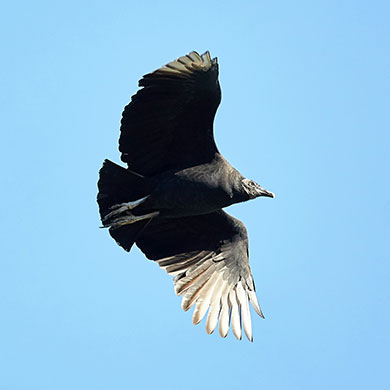
Black Vulture
Discover More
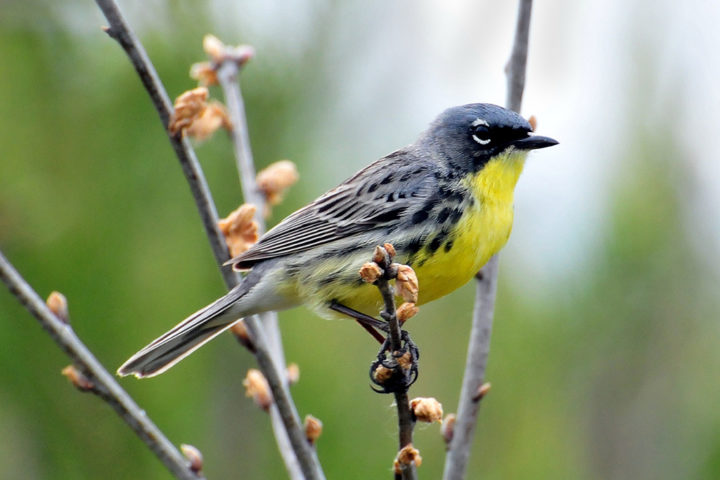
By Marina Ritchie
Wild Skyway
Wherever you are on the Appalachian Trail, birds offer sweet companionship. Yet, as hiker numbers soar, bird populations tumble.
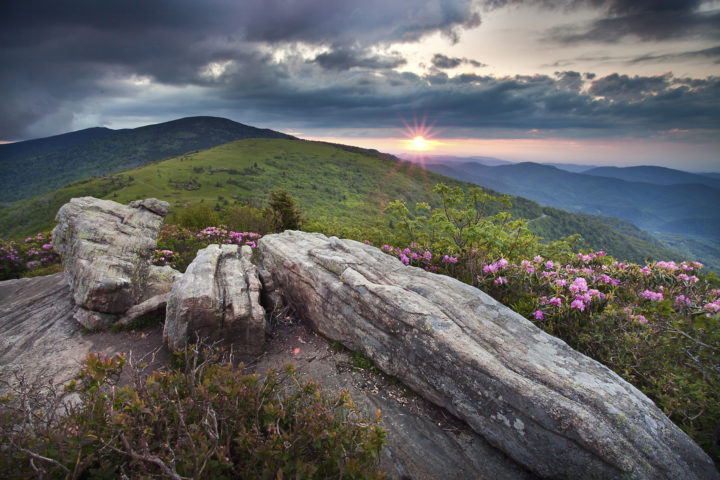
Roan Highlands Haven
Appalachian Balds are for the Birds
The iconic bald mountains along the Appalachian Trail in North Carolina and Tennessee are significant to the future of migratory and resident birds.
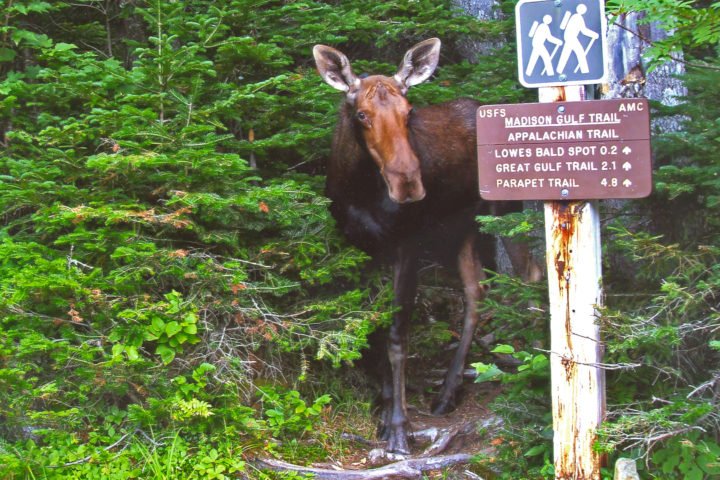
The A.T. landscape is a superhighway for species
Species Movement on the A.T. Landscape
The Appalachian Trail (A.T.) is more than a hiking path for humans. The A.T. connects mountains and forests with rugged topography and ever-changing elevation, allowing wildlife to move into habitats that suits their needs.
